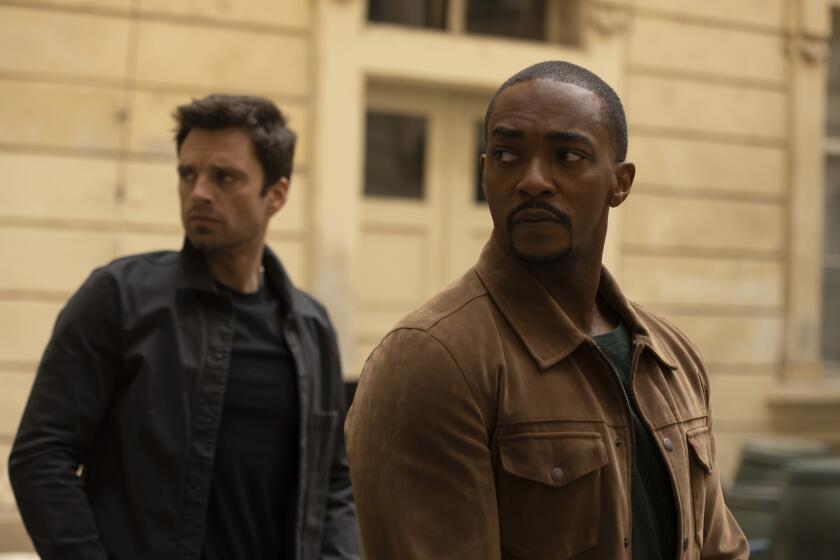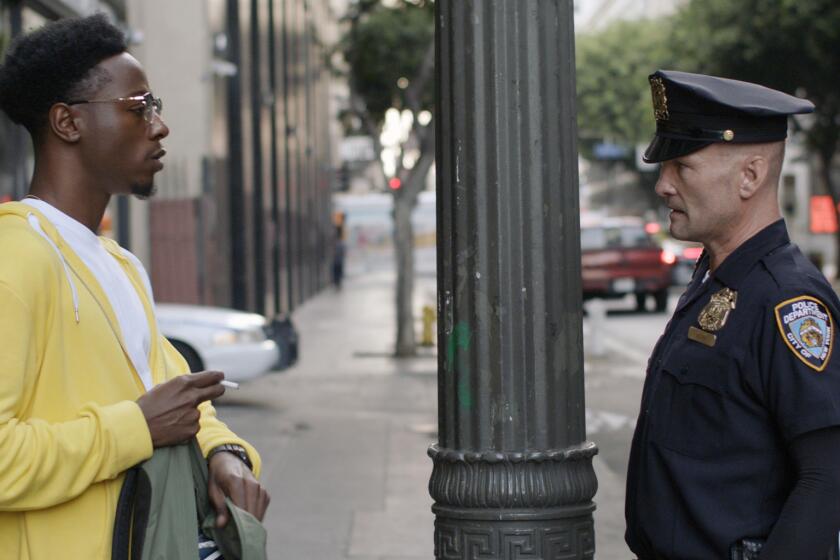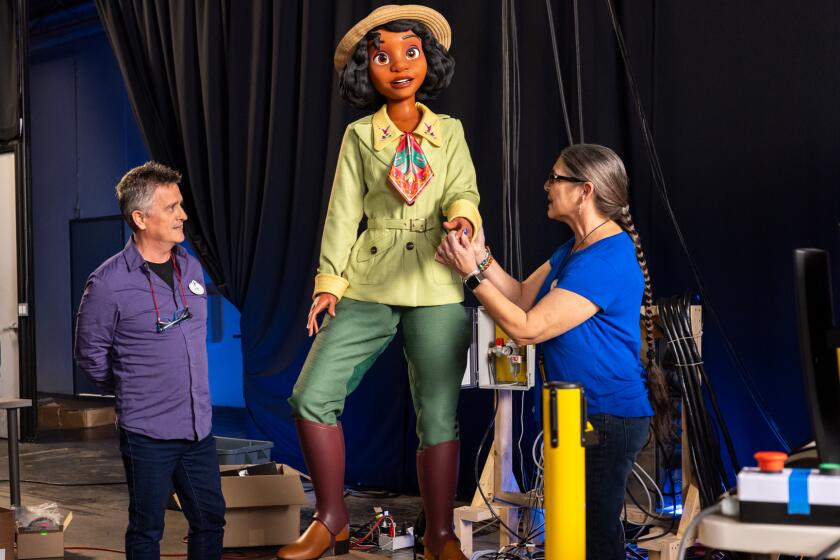The story behind the MCU’s first Black Captain America
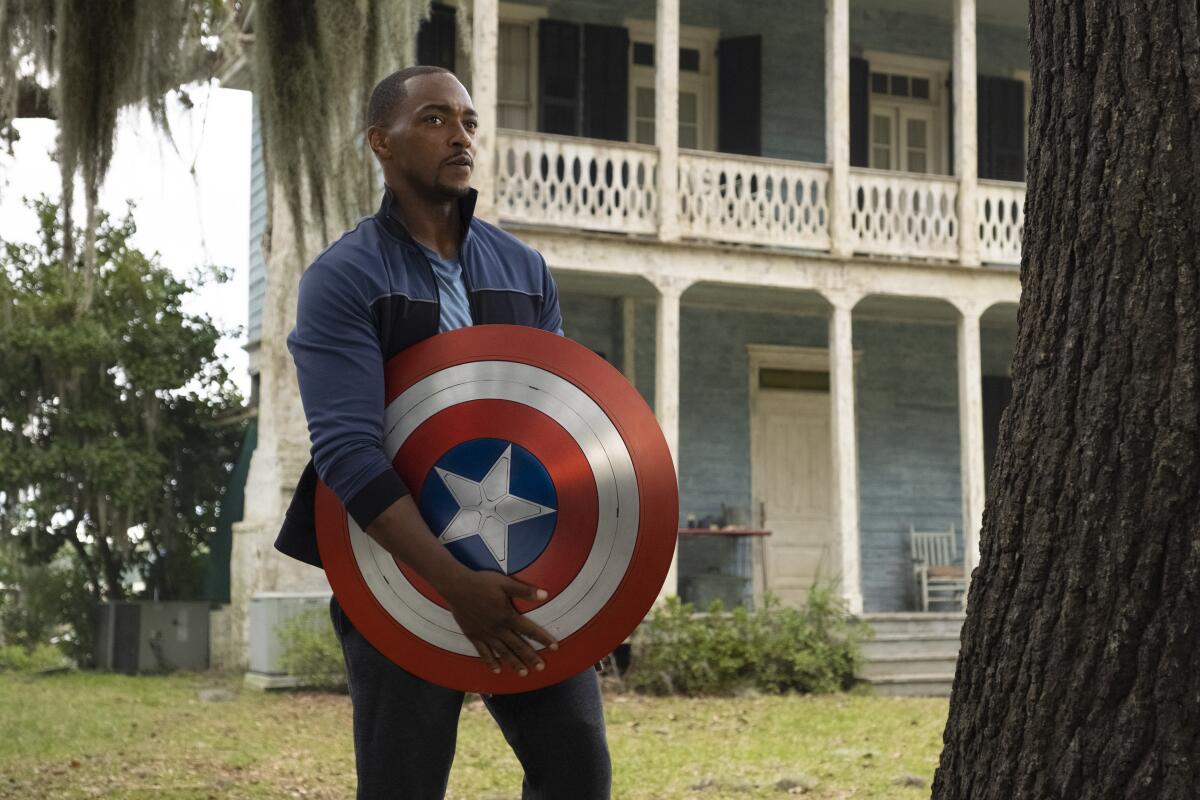
This story contains spoilers for the first five episodes of “The Falcon and the Winter Soldier.”
In the penultimate episode of “The Falcon and the Winter Soldier,” Sam Wilson (Anthony Mackie) finally gets back Captain America’s shield and chooses to accept the mantle.
“What would be the point of all the pain and the sacrifice if I wasn’t willing to stand up and keep fighting?” he says before a training montage that shows his growing mastery of the shield.
Since premiering last month, the Disney+ series has explicitly confronted the complicated legacy of what Cap’s shield represents and the complexities of what it means to be a Black hero in America.
At times it has been the show’s “villains” that have offered the most incisive commentary. Karli Morgenthau (Erin Kellyman) points out in Episode 4 that the “shield is is a monument to a bygone era. A reminder of all the people history just left out.” In the same episode, Baron Zemo (Daniel Brühl) posits that “the desire to become a superhuman cannot be separated from supremacist ideals.”
“Falcon and the Winter Soldier” head writer Malcolm Spellman and director Kari Skogland on Sam Wilson, Bucky Barnes and how Marvel Studios set up its new TV show.
That these points are raised by villains complicates the messaging, but they are still emblematic of the ideas Sam must grapple with before choosing to take up the shield.
Like other offerings from the Marvel Cinematic Universe, “The Falcon and the Winter Soldier” is not a direct adaptation of any specific comic book storyline. But there are comic book influences throughout the show.
In the comics, the mantle of Captain America passed from Steve Rogers to Sam Wilson in 2014. In “Captain America” No. 25 by writer Rick Remender and artist Stuart Immonen, an aged Steve gathers the Avengers to introduce Sam as the new Captain America and hands him the shield.
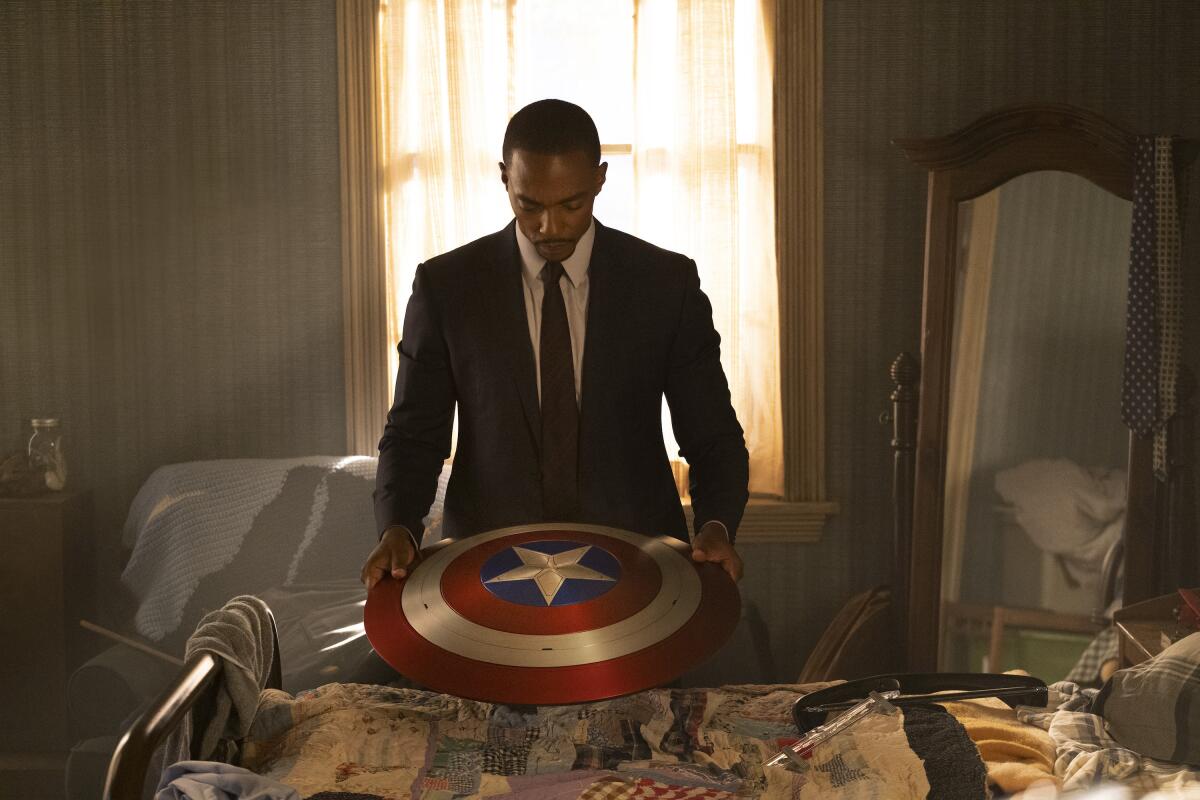
This leads into the launch of the “All-New Captain America” comic book series (also by Remender and Immonen), which sees Sam take on missions with Nomad, a superhero codename used by Rogers’ adopted son, Ian, and occasionally check in with Steve himself. But while the series touches on the existence of some civilians who don’t accept Sam as the new Captain America, it’s not until 2015’s “Captain America: Sam Wilson” — by writer Nick Spencer and artist Daniel Acuña, as well as others including Paul Renaud and Joe Bennett later in the run — that Sam is shown taking a clear political stance.
In “Captain America: Sam Wilson” No. 1, Sam thinks, “shouldn’t Captain America be more than just a symbol?” and decides to make his opinions known because he believes that could lead to positive change. Instead, he faces more backlash. “Captain America: Sam Wilson” also engaged with several major political and social issues during its run, including immigration, the border and policing. (This was also the comic book run that introduced Joaquin Torres, who eventually became the next Falcon.)
Amazon’s ‘Them’ and Oscar nominee ‘Two Distant Strangers,’ which mix racist violence and genre elements, have ignited a debate over ‘trauma porn.’
One of the most significant characters that “The Falcon and the Winter Soldier” has introduced to the MCU is Isaiah Bradley (Carl Lumbly), who in Episode 5 explains to Sam his experience of being forcefully experimented on at the hands of the government during the Korean War.
According to Isaiah, “no self-respecting Black man would ever want to be” Captain America.
Isaiah’s MCU backstory is very similar to that of his comic book counterpart. Isaiah was introduced in writer Robert Morales and artist Kyle Baker’s 2003 comic book series “Truth: Red, White and Black.”
In this miniseries, a group of Black soldiers is experimented on by the government’s secret super soldier program during World War II. The super serum in this phase is wildly unpredictable, but Isaiah is among those who endure the procedure and is turned into a super soldier. He is sent on secret missions with his squad, eventually emerging as the sole survivor of the experiments. Despite his heroism, he is ultimately court-martialed for stealing a Captain America uniform (which he had used to carry out a mission Steve Rogers was late for) and serves years in solitary confinement.

These are just a few of the “Captain America”-related comic book series that have addressed racism and the injustices Black Americans have been forced to endure. The ongoing nature of comic books means these storylines are regularly rebooted and history is rewritten; Sam’s run as Captain America in the comics only lasted until 2017 and he has since reclaimed the title of Falcon. “The Falcon and the Winter Soldier” is Marvel’s chance to leave a bigger, more lasting impact on screen.
More to Read
The complete guide to home viewing
Get Screen Gab for everything about the TV shows and streaming movies everyone’s talking about.
You may occasionally receive promotional content from the Los Angeles Times.
